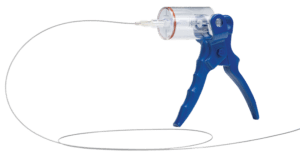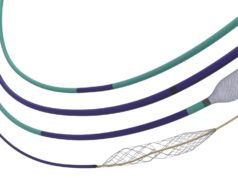
Control Medical Technology has announced that the US Food and Drug Administration (FDA) has cleared its Aspire MAX 7 – 11F mechanical thrombectomy platform to remove blood clots from peripheral vessels.
“This FDA clearance quadruples our product offering and improves our ability to help patients,” said Shawn Fojtik, president of Control Medical Technology in Park City, USA. “The Aspire MAX 7 – 11F mechanical thrombectomy system includes (20) new large-lumen, flexible, and kink-resistant catheters w/dilators powered by the Aspire aspirator and/or an electromechanical pump.”
During a procedure, clinicians typically access the femoral artery or vein, track a catheter over a guidewire to the thrombus, and then apply low-performance suction with a basic syringe or pulsed continual high-performance vacuum with an Aspire mechanical aspirator or an electromechanical pump.
“Blood clots range from soft-fresh clots to hard-aged thrombus,” continued Fojtik. “Clinicians need more cost-effective tools to remove blood clots. We plan to introduce more catheter and electromechanical pump innovations for use in peripheral, coronary, and neurovascular procedures.”
The new Aspire MAX 7 – 11F mechanical thrombectomy system includes 7F (0.090″) outer diameter (OD) to 11F (0.140″) OD catheters with flexible dilators for improved tracking. Catheters may be connected to the Aspire aspirator and/or an electromechanical pump for increased speed, force, volume, and control.
Control Medical’s platform also includes the Aspire MAX 5 – 6F mechanical thrombectomy system with over-the-wire catheters for peripheral vasculature and the Aspire RX-LP mechanical thrombectomy system with rapid exchange catheters for peripheral and coronary vasculature.
Data was recently published using the Aspire RX-LP mechanical thrombectomy system’s to remove blood clots from total occlusions during heart attack [Adams G, Cavros N, Tai Z, “Novel mechanical thrombectomy device for treatment of acute myocardial infarction: A retrospective report,” Journal of Invasive Cardiology, 2020;32(4):142-146].













